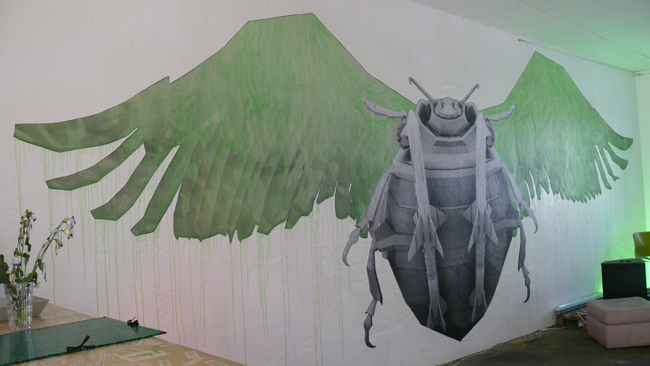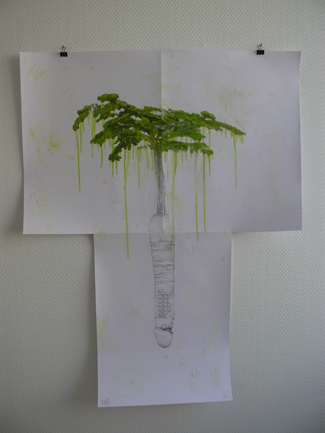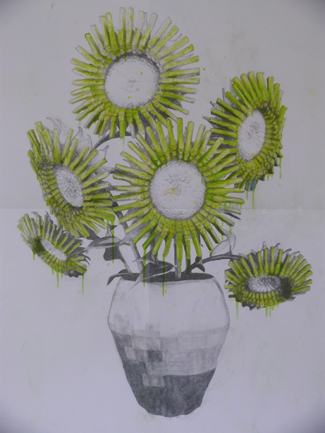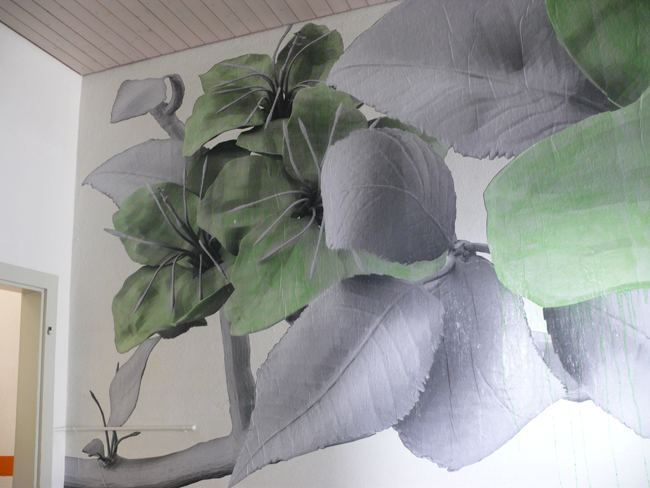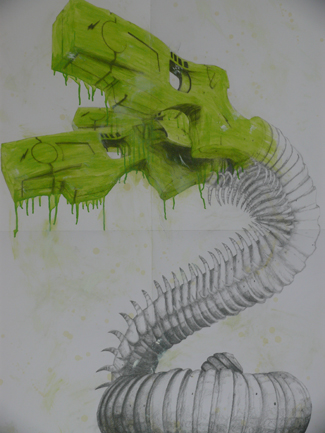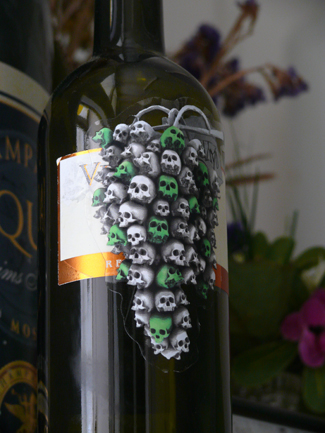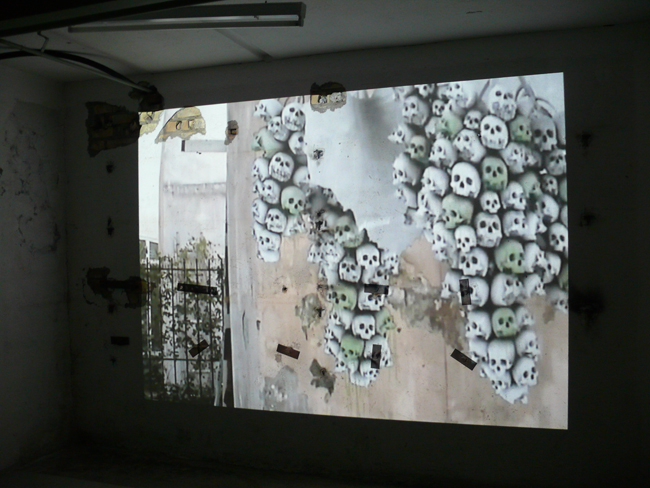GIFs are everywhere these days and we are not sure why they have suddenly become so trendy but we seem to have stepped on the wave and are giving you 5 mesmerizing industrial GIFs

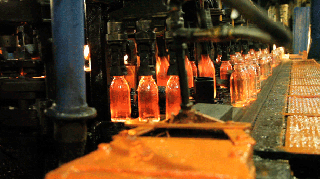
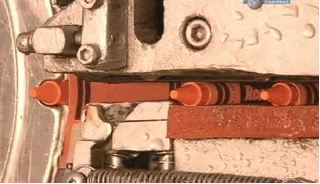
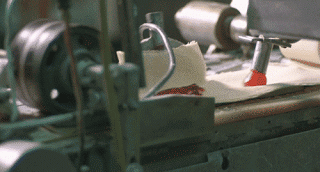
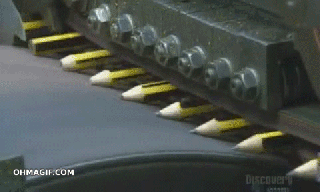
GIFs are everywhere these days and we are not sure why they have suddenly become so trendy but we seem to have stepped on the wave and are giving you 5 mesmerizing industrial GIFs





Too scared to get a real tattoo? How about a watercolour one, easily washable and as beautiful as the real ones. Here is a selection for you.
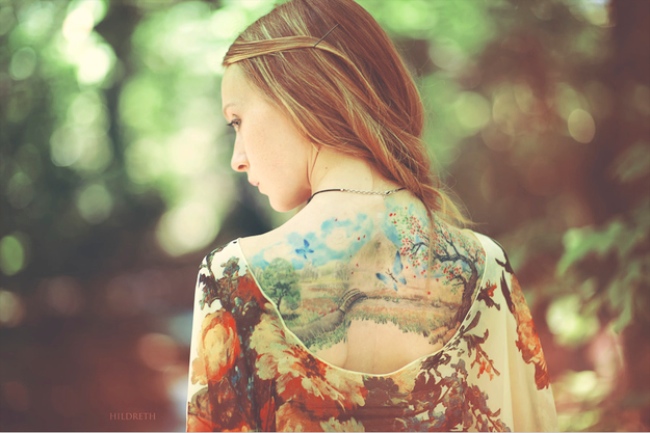
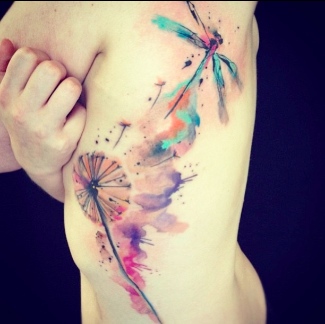
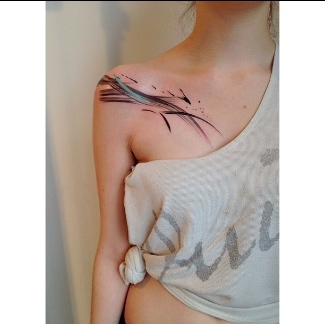
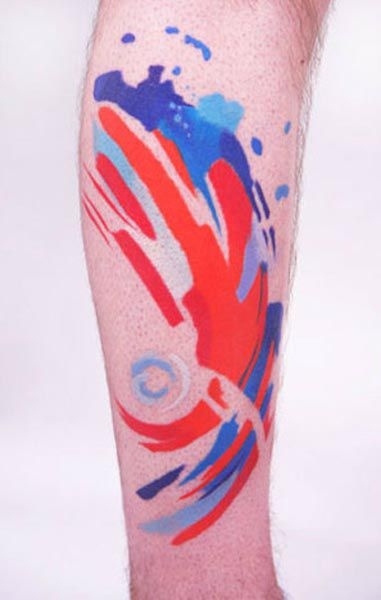
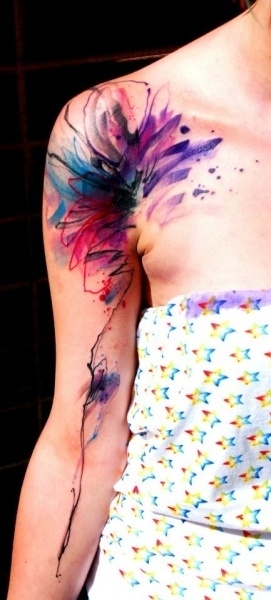
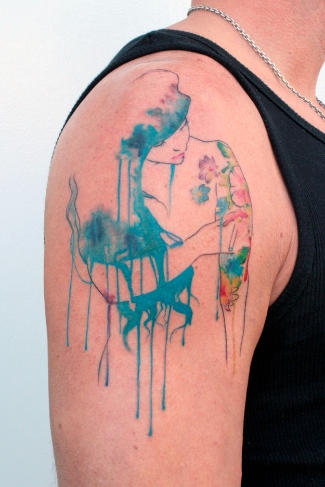
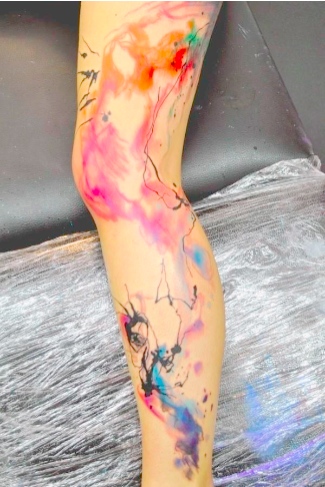
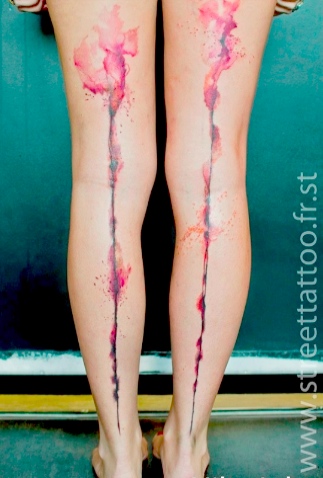
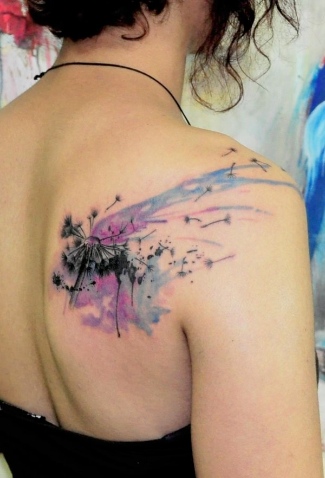
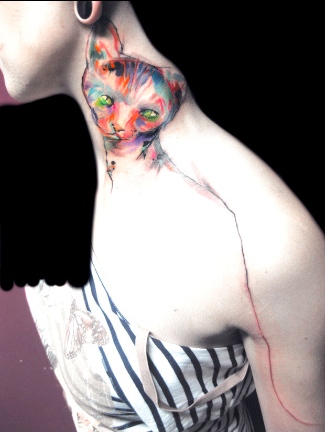
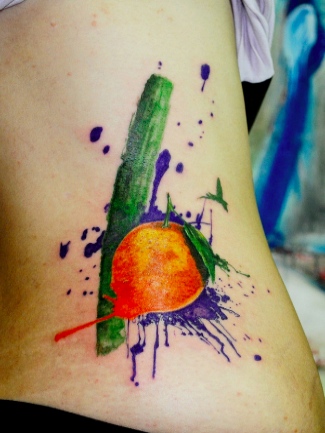
Part of our 3 street art works series you should see today: Christian Blanxer, Alexandros Vasmoulakis & Jos.
Christian Blanxer – located in n/Apolo Teatro, Barcelona (Spain)
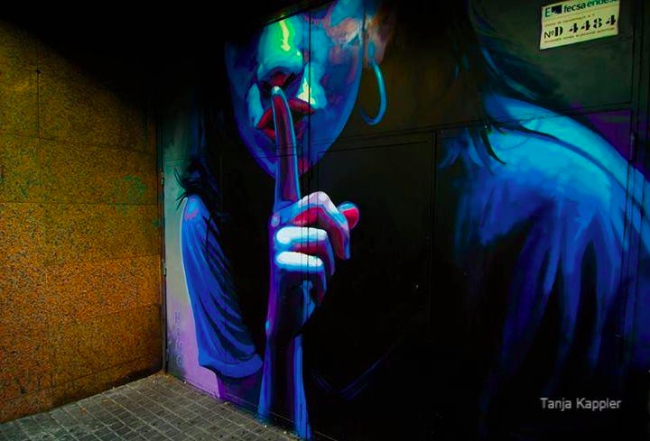
Alexandros Vasmoulakis – located in Athens (Greece)
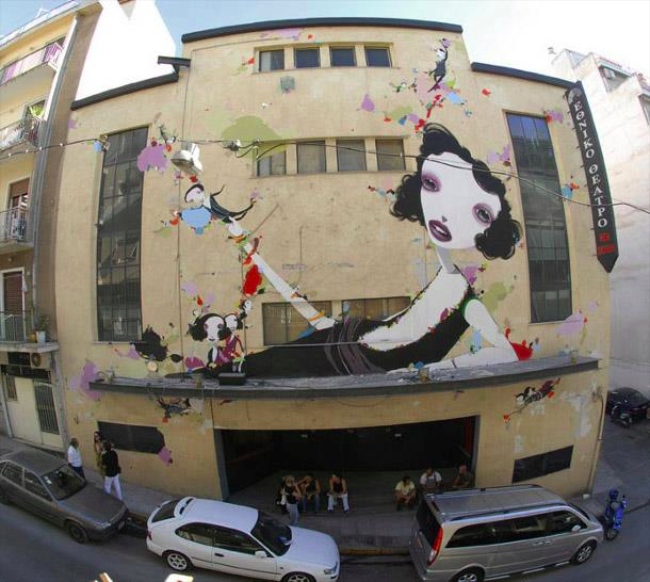
Jos – located in Bilbao (Spain)
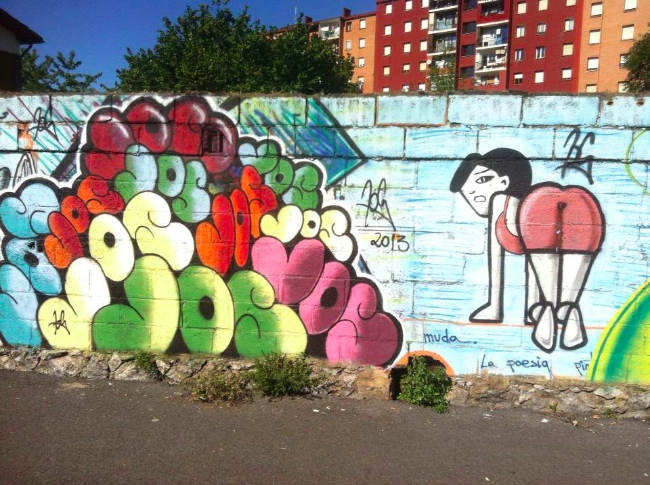
Ha ha ha… That was bound to happen, wasn’t it? Caught out because of twittering too much or the wrong thing!
Jason Willians aka REVOK (US graffiti artist) got caught out in Australia (as he was leaving the country) after twittering where he would drop his next graffiti pieces as well as after posting actual pictures of his graffitis freshly sprayed on walls of Melbourne.
And if you wonder how the police knew when to apprehend him at the airport, he twittered it saying ‘he was on his way to the airport’
hmmmm… Just plain stupid on this one or PR stunt?
Anyway, ART-PIE eat his work, he is just a great graffiti artist!
>>> Watch the video
***VANDAL VACATION*** from WWW.REVOK1.COM on Vimeo.
![]() If you strolled in Central London recently, you must have come across these unusual looking phone boxes and maybe wondered what all this was about.
If you strolled in Central London recently, you must have come across these unusual looking phone boxes and maybe wondered what all this was about.
Peter Blake, Gerry Judah, Rob and Nick Carter, sculptor duo the DnA Factory and some 70 others artists and designers took part in the BT ArtBox project where they had to transformed the notorious red telephone box into a piece of art.
This project is sponsored by BT to raise money for ChildLine and all “artboxes” are u for auction until the 22nd July so get bidding today, it is for a gret cause.
Which ones do you like or have seen? We have included our top 5 below. See all BT ArtBox entries.
BT ArtBox by Gerry Judah
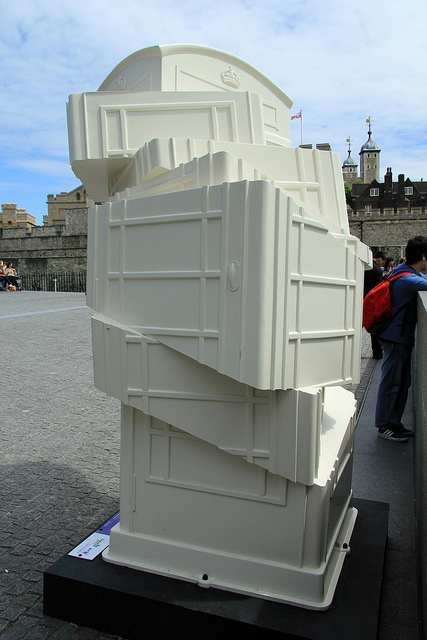
BT artbox ‘Utopia’ by Basson and Brooke
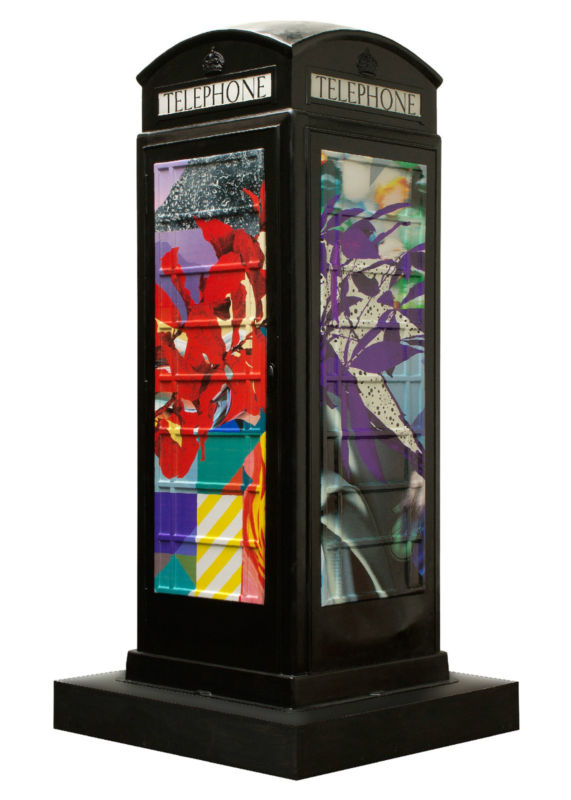
BT artbox ‘Dial M for monster’ by Lauren O’farell
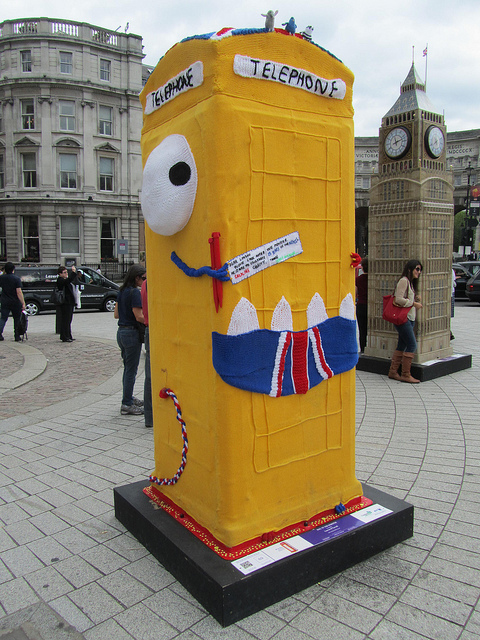
BT Artbox ‘Colour Wash’ by Rob & Nick Carter
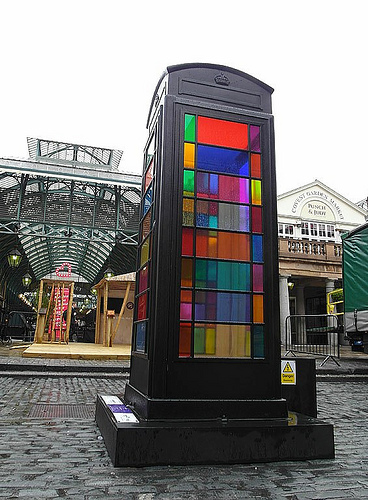
![]()

This year, Crunch: the art festival at hay will bring the same mix of thought-provoking debates, incisive talks and late-night parties. For one magical weekend in November, an eclectic set of artists, gallery directors, art critics, authors, academics, philosophers, film-makers and musicians will congregate in Hay to debate the big question: what’s the point of art? Continue reading Crunch 2010 – The Art Festival at Hay: book the date
So there we had it – the 23rd London art fair, the biggest yet with a remarkable 24 ooo+ visitors this year. It has proven to me that this event is the place or one of the best places to discover, see or enjoy the best of modern and contemporary British art.
Over 120 galleries exhibited this year, a decent number but still lagging behind its big sister, the Frieze art fair, with its 170+ galleries but the two events should maybe not be compared as the Frieze fair is an international fair while the London art fair focusing on British art.
Another noticeable thing was that this year again, London based galleries made the bulk of the exhibitors with 80%. Painting and sculpture were also again the two main types of arts that could be seen but this is what the London Art Fair (LAF) has been about for a while now. The regular visitor will know this, the newbies not necessarily.
Selected works from the fair below.
William Martyr
Acrylics on canvas | Tag Fine Arts
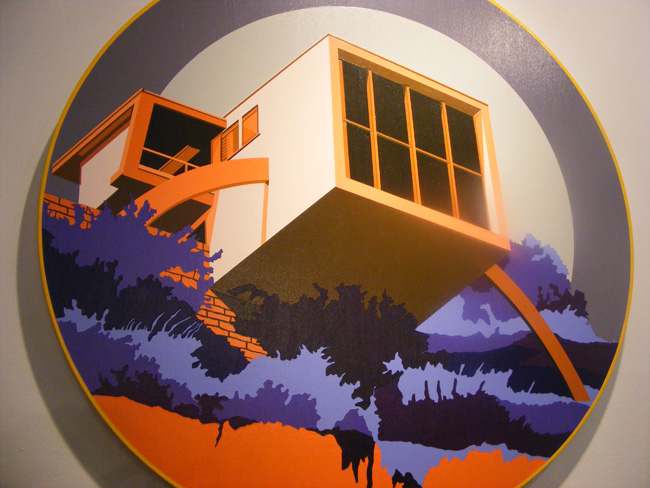
Paul wright
Oil on canvas | Thompson gallery
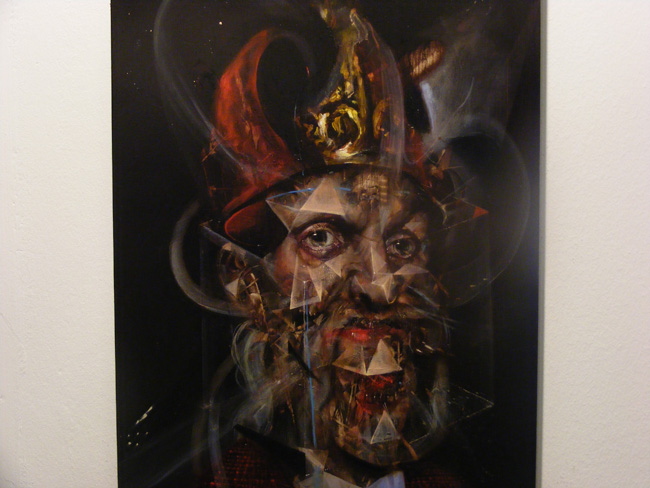
John Hoylan
Acrylics on cotton duck | Beaux Arts London
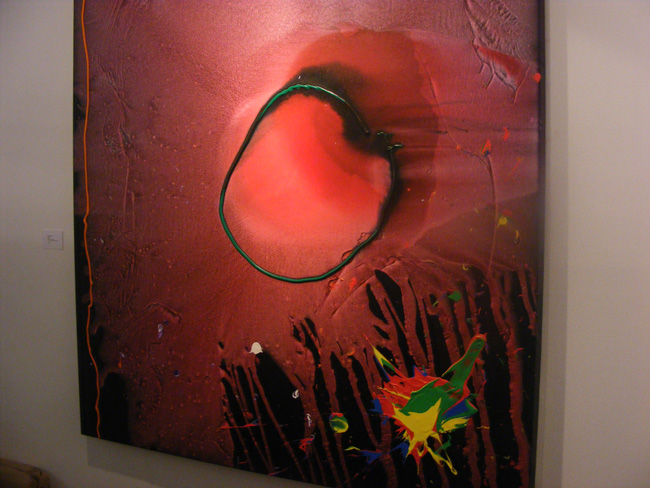
Andrea Mastrovito
Cut paper collage and aniline dye on paper | Foley gallery
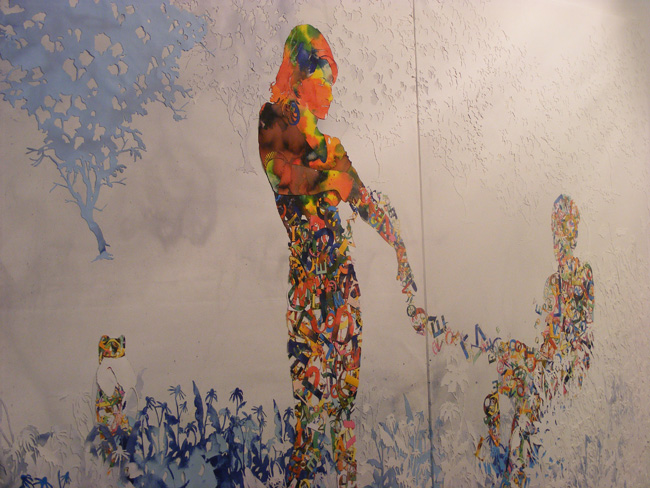
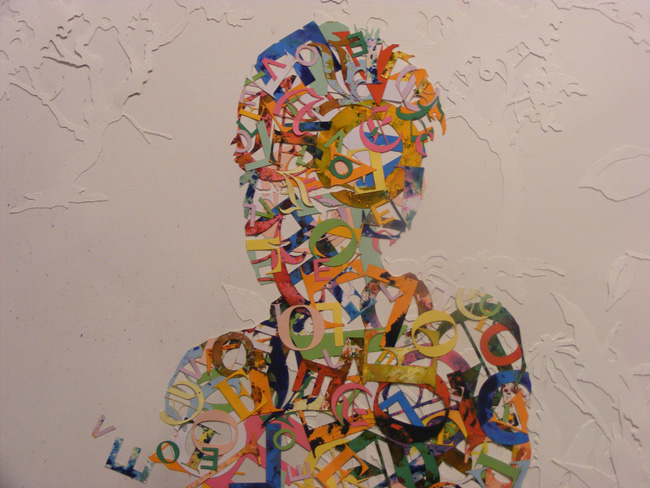
Dominic Shepperd
Oil on canvas | Charlie Smith
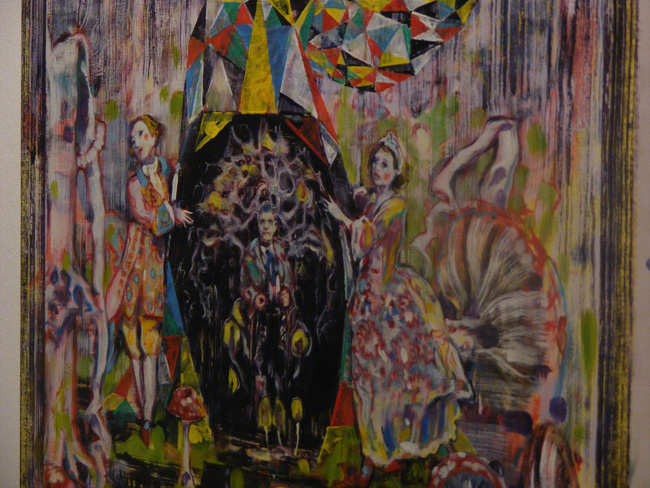
Marilene Oliver
Laser prints on card, red ink, bonded nylon and seed beads | Beaux Arts London
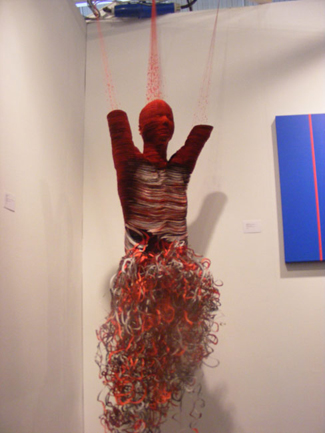
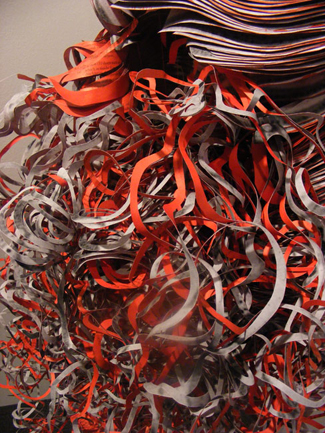

I recently interviewed London artist Shireen Qureshi for This ‘Me’ of Mine. Her ‘Untitled Nude’ is a compelling expression of the struggle in the violence of existence; of being flesh and bone. We discussed an interesting point of the Deleuzian ‘event’…
Jane Boyer: Deleuze suggests we are an event; meaning that out of a chaos in which conditions have come together to form a ‘one’ or have passed through ‘a screen’ which allows something rather than nothing to happen.[1] There is a sense of ‘event’ in your tableaus and the figures are that ‘event’, as if we are witnessing the coalescing of a self, how do you see this? Do you feel the passage of time is relevant to the self?
Shireen Qureshi: It is interesting that you suggest that we are witnessing the coalescing of a self in my work because in my mind I am more interested in breaking down the body, of rupturing boundaries. I often initiate a painting by making it look real and then trying to break it down, by overlapping bodies or breaking apart skin and bone, I suppose in that sense the aim for me is towards chaos rather than from it. But I think that this is a very interesting idea, especially the sense of an ‘event’ you describe in my work, forcing my viewers into the role of witness. I think that if the paintings have created any sense of inescapable drama pinning both my figures and viewers in place, then this is an achievement in itself. From my point of view, the passage of time is interesting because it is within a space of time that metamorphosis and transformation can occur. I would like to create a sense of movement, an undulation within each of my paintings as if they were bubbles of captured space and time. I think that time is inescapably relevant to the self because it is within time that a self is built or deconstructed, subjected to the violence of existence, and within which the self moves, inevitably, towards death.
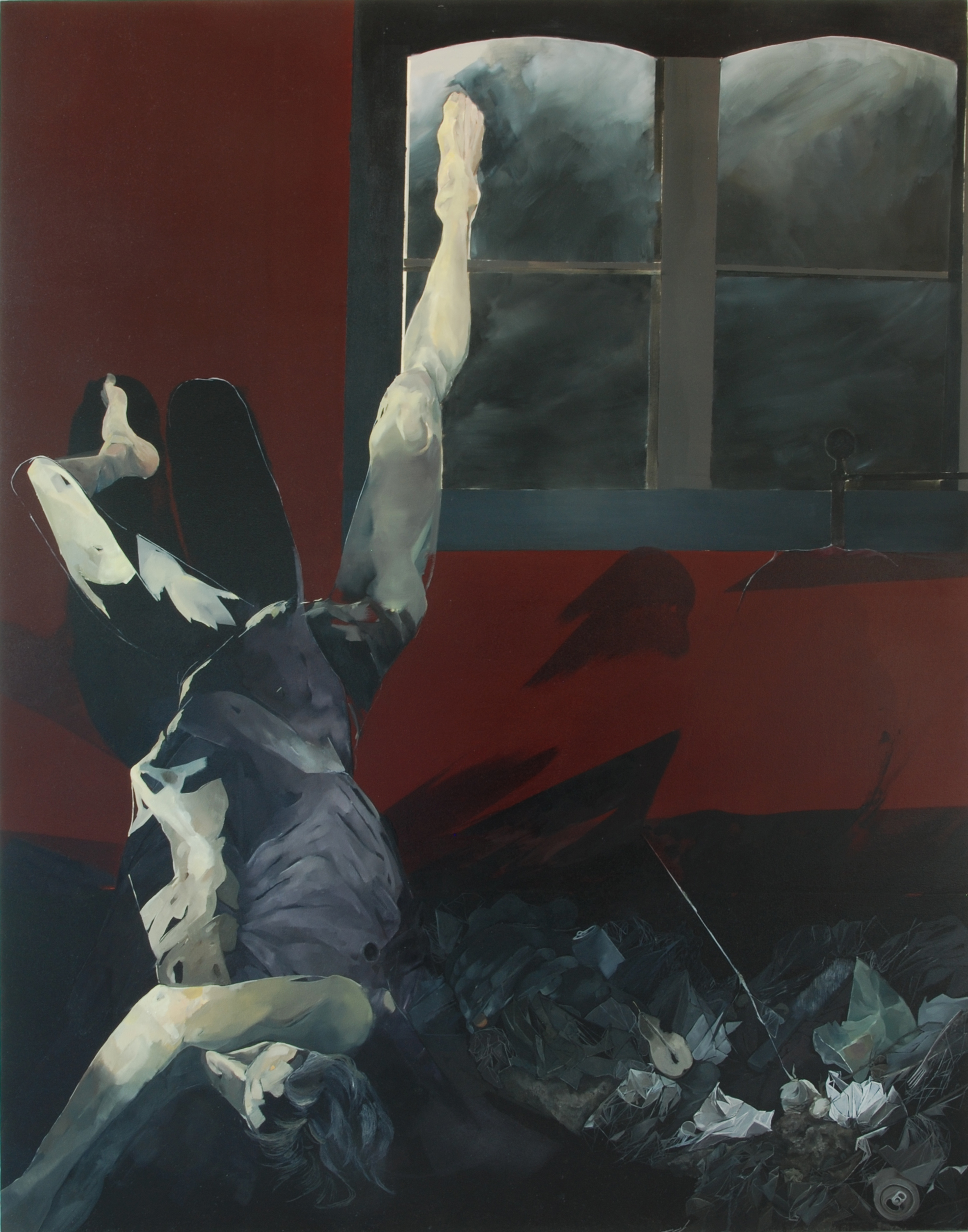
Whether we think much about it or not, we live every moment of our existence with the thought of our extinction – every one of us could cease to exist at any moment. This latent threat is one aspect of the ‘violence of existence’ mentioned by Shireen. From her point of view the violence exists in the visceral reality of living in flesh and bone, a violence we understand first hand. Often through serious illness or accident, the loss of loved ones or violent personal threat we realize the fragility of our existence and the latent threat of our extinction become a conscious reality. Once aware of this imminence our sense of self undoubtedly alters; we become a self with limited time.
The visual breakdown of bodies, flesh and bone is an interesting interpretation of this psychological awareness of our mortality. The ambiguity of whether the bodies in Shireen’s paintings are coalescing or breaking down is indicative of the struggle in the moment of ‘difference’ described by Deleuze, and as such, is also the ‘violence of existence’ Shireen speaks of. Deleuze said, “Indifference has two aspects: the undifferentiated abyss, the black nothingness, the indeterminate…in which everything is dissolved – but also the white nothingness, the…calm surface upon which float unconnected determinations like scattered members: a head without a neck, an arm without a shoulder, eyes without brows. The indeterminate is completely indifferent, but such floating determinations are no less indifferent to each other. Is difference intermediate between these two extremes [the undifferentiated and the determinate]? Or is it not rather the only extreme, the only moment of presence and precision?”
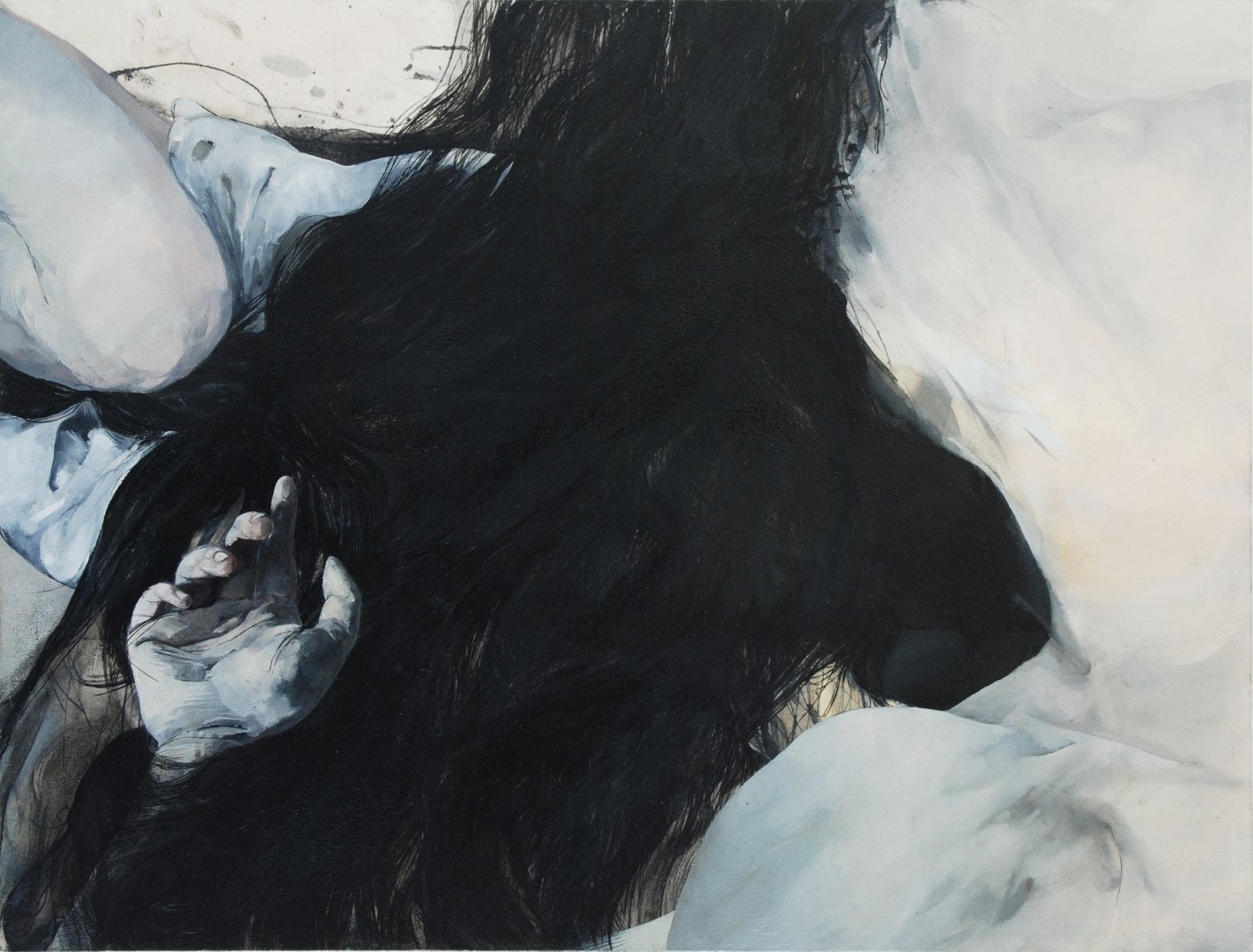
He continued, “There is cruelty, even monstrosity, on both sides of the struggle against an elusive adversary, in which the distinguished opposes something which cannot distinguish itself from it but continues to espouse that which divorces it.”[2]
Living is difference; it is the precision of presence. Living with the imminence of our extinction is the violent struggle of divorcing that which continues to espouse us; a struggle “within which the self moves, inevitably, towards death,” as Shireen says.
Read more of our interview, ‘Straight from the Nerves’ on the This ‘Me’ of Mine blogsite.
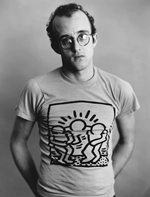
On February 16, 1990, at age 31, Keith Haring’s life was cut short due to an AIDS-related illness. He would have been 54 today and as a homage, here are a few words and a tribute to his most iconic pieces of art.
I wonder what Keith Haring (May 4, 1958 – February 16, 1990) would make of the global phenomenon that street art is now, art form very much confined to the street of New York City at the time when he decided to move there in 1978, aged 19.
Having studied commercial art and then Fine Arts, he took a keen interest in graffiti art, Haring would go out there and paste collages of fake New York Post headlines on lamposts or news stands. He explored the likes of SAMO (Jean-Michel Basquiat) or Fab Five Fred (Fred Brathwaite) graffiti art to quickly put in practice his own interpretation of this form of art and would develop his future vocabulary of primitive cartoon-like forms. The Haring’s chalk-drawn “radiant babies” and “barking dogs” were born (see pictures) and woud become familiar sights on the matt black surfaces used to cover the old advertisements in the subways.
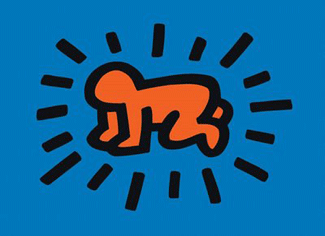
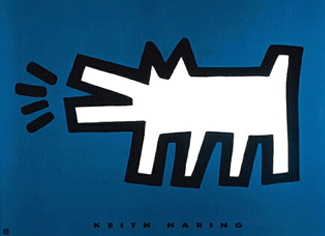
These chalk drawings in the subways of New York got Haring in the public eye and he would go on from there to have his first exclusive exhibition in the Tony Shafrazi Gallery which put together a retrospective a few years ago about it – see picture. Willing to reach a larger public, he immersed himself in popular American culture and befriended individials such as Andy Warhol, Madonna or Grace Jones (whom he would body-paint).
Haring was also a keen social activist and as a result of his ever increasing political involvement; he designed a Free South Africa poster in 1985 (see picture) and painting a section of the Berlin Wall in 1986 (see picture). Other works include design for Swatch watches or the Absolut Vodka advertisement (see picture)
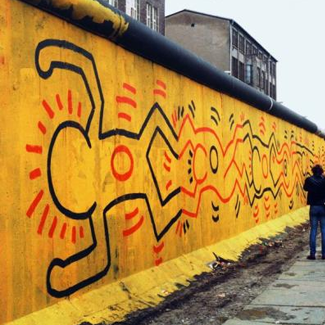
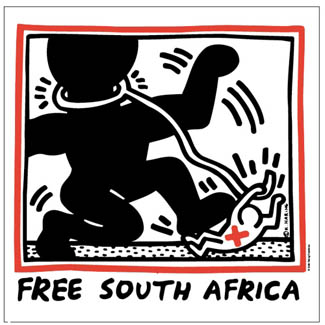
Keith Harring’s work are just simply one of the best examples of how consumerism, popular culture and fine art merged in the 1980s.
Recommended readings
Keith Haring: The Authorized Biography by John Gruen (1991) includes interviews with the artist and those closest to him and is an invaluable source for understanding the art and life of Haring.
The early work is illustrated in Art in Transit: The Subway Drawings (1984) and Keith Haring (Shafrazi Gallery, 1982). An enlightening interview by David Sheff appeared in Rolling Stone (August 10, 1989).
Elizabeth Aubert directed an insightful video entitled Drawing the Line: A Portrait of Keith Haring (Biografilm, 1989).
Later an attempt was made to place Haring within a broader art historical context in Keith Haring, edited by Germano Celant (1992). □
We arrived in Zurich to find that the centre of town, near where we are staying is insanely upper class. Ferrari’s and Bentleys cruising the streets typically driven by what looked like teenage boys and the main streets lined with cafe’s filled with people wearing Gucci sunglasses laughing and sipping their cocktails.
It was not something that we were expecting and thought that it was extremely superficial, until we ventured of the beaten track in search of Starkart gallery that was hosting the LUDO solo show.
The neighbourhood that Starkart is located in is very culturally diverse and much more down to earth.
Starkart is one of the most understated spaces we have come across, set inside an old residence turned commercial space that gives no impression of what is happening behind the scenes.
The Ludo show is set over multiple rooms on two levels, it is a minimalistic show, with the works widely spread out to make use of the vast space provided.
The ground floor displays originals from his “nature’s revenge” series and the basement features two video installations of his work processes, from creation to installation on the street.
It really felt like urban exploration venturing into this show, moving from room to room, some brightly lit and others very dark with the sound of what seemed like a old French record echoing from the basement.
Check out the full set of Ludo pics here:
http://www.flickr.com/photos/chasingghosts/sets/72157626390493355/
